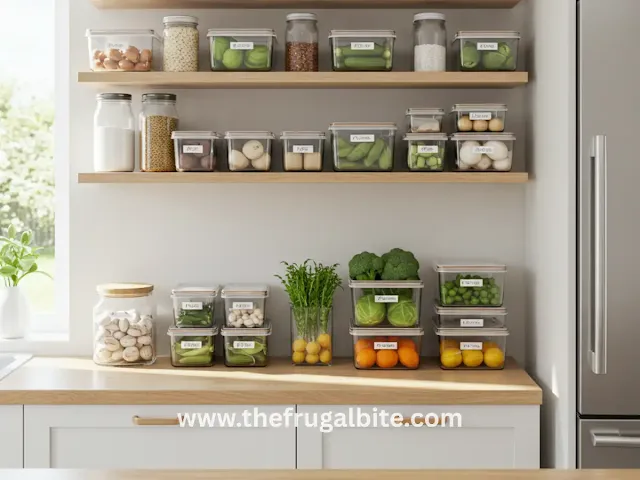5 Smart Food Storage Tips to Save Money & Reduce Waste

|
| 5 Smart Food Storage Tips to Save Money & Reduce Waste |
Ever opened your fridge to find moldy bread, wilted greens, or forgotten leftovers? You're not alone. According to a 2022 report by the USDA, the average U.S. household wastes $1,500 worth of food annually—money that could stay in your pocket with smarter storage habits.
The good news? With a few smart food storage tips, you can extend the life of your groceries, save money, and cut down on waste. Keep in mind that storage effectiveness may vary depending on your fridge model, local climate, and food quality. Whether you're meal-prepping, bulk-buying, or just trying to keep produce fresh longer, these food storage hacks save money while keeping your kitchen organized.
Tip 1: Master the "First In, First Out" (FIFO) Principle - Digitally & Physically
Why It's Smart
Ever bought milk, only to realize you already had a half-full carton hiding in the back? FIFO prevents this by ensuring older items get used first, reducing waste and duplicate purchases.
How to Implement FIFO
- Physically: Store new groceries behind older ones in the fridge and pantry.
- Use shelf organizers to keep similar items together (e.g., dairy, condiments).
- Label leftovers with dates to track freshness.
Smart Digital Twist
- Use a notes app or spreadsheet to log expiry dates.
- Set reminders for items nearing expiration.
- Sync with meal planning to prioritize soon-to-expire ingredients.
Tip 2: Strategic Containerization - Use the Right Container for the Right Food
Why It's Smart
Best Container Choices
| Food Type | Best Storage |
|---|---|
| Leftovers, grains | Airtight glass/plastic |
| Berries, leafy greens | Vented containers/liners |
| Bulk dry goods | Mason jars with oxygen absorbers |
Pro Tips
- Glass > Plastic (non-porous, no stains or odors, per FDA food safety guidelines).
- Avoid overpacking—leave space for airflow where needed.
- Vacuum sealing works wonders for freezing meat and bulk items.
Tip 3: Understand Your Fridge's Microclimates
Why It's Smart
Optimal Fridge Zones (Based on FDA recommendations)
| Zone | Best For |
|---|---|
| Door (Warmest) | Condiments, pasteurized juices |
| Upper Shelves | Leftovers, drinks |
| Lower Shelves | Raw meat, dairy, eggs (store meat on a tray!) |
| Crisper Drawers | High humidity (veggies), low (fruits) |
Smart Twist
- Keep ethylene producers (apples, bananas) away from sensitive foods (greens, broccoli).
- Don't overcrowd—proper airflow keeps temps stable.
Tip 4: Revive & Repurpose - Give Wilting Food a Second Chance
Why It's Smart
How-To Salvage Common Foods
- Wilted greens? Soak in ice water or blend into pesto.
- Soft fruit? Bake into muffins or freeze for smoothies.
- Stale bread? Make croutons, breadcrumbs, or French toast.
- Veggie scraps? Simmer into homemade stock.
Pro Tip
Tip 5: Embrace the Freezer - Your Long-Term Savings Partner
Why It's Smart
Freezing Best Practices (Per USDA guidelines)
What Freezes Well vs. What Doesn't
Bonus Tip: Conduct Regular Food Audits
- Check expiry dates.
- Move soon-to-expire items front and center.
- Plan meals around what needs to be used.

